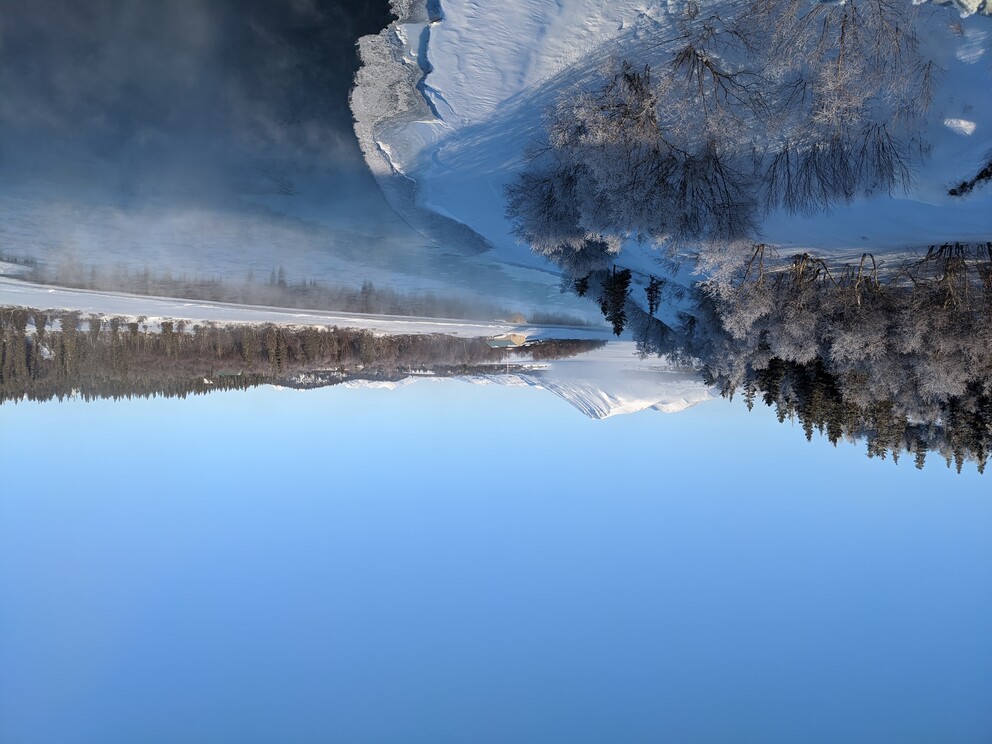
Bridges are increasingly critical for remote communities in rural Alaska, where global warming is causing rivers to freeze later, thaw earlier and form thinner ice. With a new grant from the National Science Foundation, researchers at Penn State plan to investigate the importance of bridges for the well-being of remote Alaskan communities and develop a protocol for these and other communities to fund, construct, monitor and maintain bridges.
“Residents of remote communities in Alaska frequently need to cross rivers or lakes to hunt and gather traditional foods, as well as access schools, health care facilities and other essential services typically available in larger towns,” said Guangqing Chi, professor of rural sociology, demography and public health sciences in the Department of Agricultural Economics, Sociology and Education, and director of the Computational and Spatial Analysis Core, part of the Social Science Research Institute at Penn State. “Travel by boat is common during warmer months, while frozen water bodies serve as transportation corridors during winter months. However, recently, there has been an increase in snowmobile fatalities on lakes and rivers when the ice is unstable and unpredictable. Reliable bridges can reduce weather-related deaths and injuries and provide safe transportation corridors that help communities stay connected.”
According to Megan Mucioki, assistant research professor in the Social Science Research Institute at Penn State, Alaska has about 1,500 bridges open to the public, making it the fourth-lowest state in terms of bridge counts. Of these, only 44% are in good condition.
“Bridges are vulnerable to seasonal freezing effects, which can quickly compromise their mechanical properties and structural integrity,” said Mucioki. “It is essential to determine effective ways to monitor the stability and safety of bridges after they are constructed.”
The team’s project will be conducted in two contrasting communities — Aleknagik and Nondalton — located in southwestern Alaska. Aleknagick is situated on the north and south shores of the outlet of Aleknagik Lake where it flows into the Wood River. In 2015, the Wood River Bridge was built to connect the two sides of the community. Until then, the north shore, where the school as well as city and tribal government offices are located, was accessible only via boat in the summer or snow machine in the winter, or via small aircraft that can land on the state-maintained runway. The bridge now allows frequent travel within the community and to the nearby larger town of Dillingham. By contrast, Nondalton, which is located 60 miles from Aleknagik, does not have a bridge, despite the need for one.
Through their project, Chi, Mucioki and their colleagues will leverage their POLARIS project to address three interrelated questions: (1) How does bridge construction affect subsistence activities, education, social ties, and health and safety of remote communities? (2) How can drones be used to monitor changes in the safety of a bridge? and (3) How can communities work together to identify and apply for bridge construction funding?
The team will conduct in-depth interviews and analyze household survey data to understand the connection between community well-being and bridge construction, as well as to understand the bridge construction process at the community and agency levels.
“From a social science perspective, it is critical to understand how bridge construction impacts community well-being and how communities can work together effectively to secure the necessary financial resources for bridge construction,” said Heather Randell, assistant professor of rural sociology and demography. “This is especially relevant right now, given that the recently proposed Infrastructure Investment and Jobs Act will provide $40 billion for bridge construction, maintenance and repair in the U.S., including $225 million in Alaska.”
From an engineering perspective, bridges are vulnerable to the effects of climate change, including permafrost thawing and increased precipitation that accelerate corrosion and rising sea levels that correspond with flooding, according to Rebecca Napolitano, assistant professor of architectural engineering. Therefore, the team plans to collect drone image data biannually to monitor and evaluate long-term structural conditions of the Wood River Bridge.
“Drone imagery and mapping can be very useful in tracking changes in the structural condition and, therefore, safety of bridges over time,” Napolitano added. “By monitoring the Wood River Bridge over the course of two years, we will be able to see whether cracks, settlement and other damages are growing or whether they are stabilized.”
Ultimately, the team’s goal is to synthesize its findings into integrated socio-engineering policy recommendations for bridge life-cycle management that will be transferable to other rural, Indigenous and vulnerable communities in the U.S. and other Arctic countries.
“This project presents a paradigm shift from disjointed social and engineering efforts on vital critical infrastructure,” said Chi. “It accounts not only for social and engineering factors independently, but also considers how those factors converge, and may lead to infrastructure construction and maintenance that better aligns with social needs.”